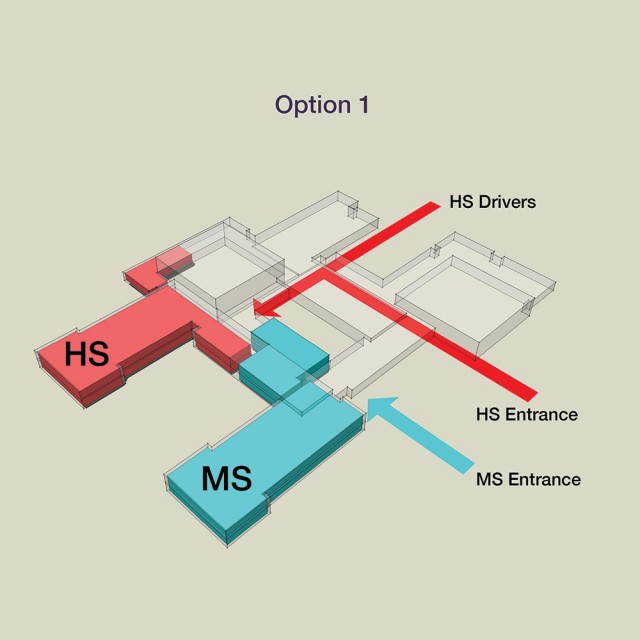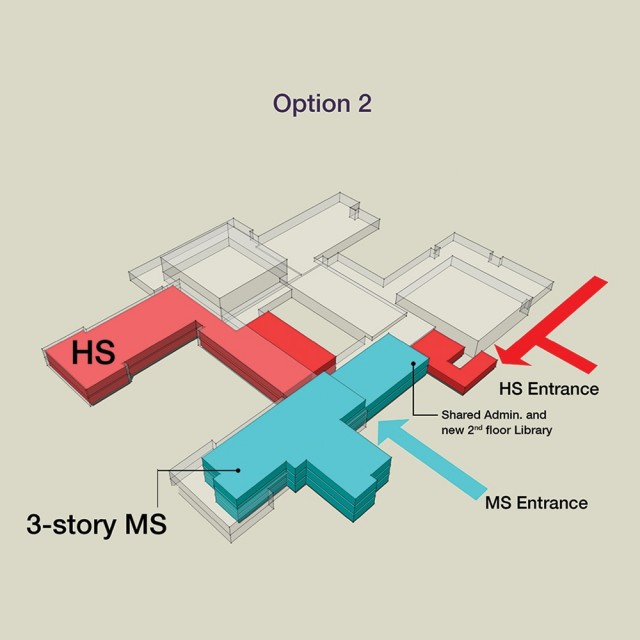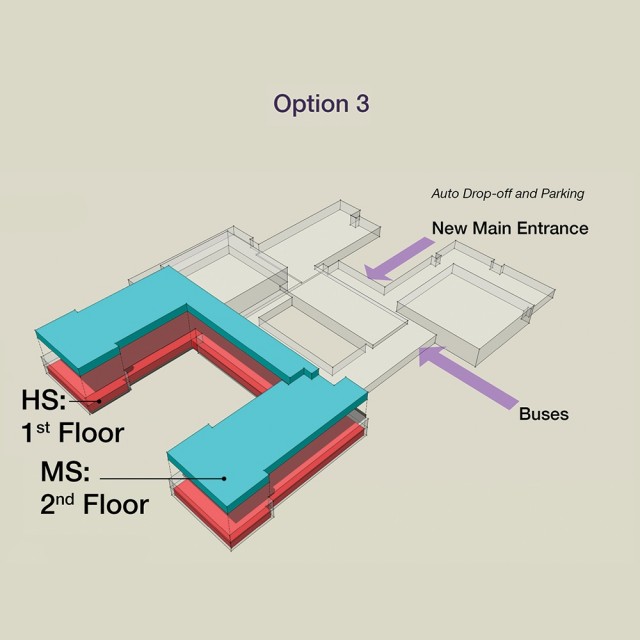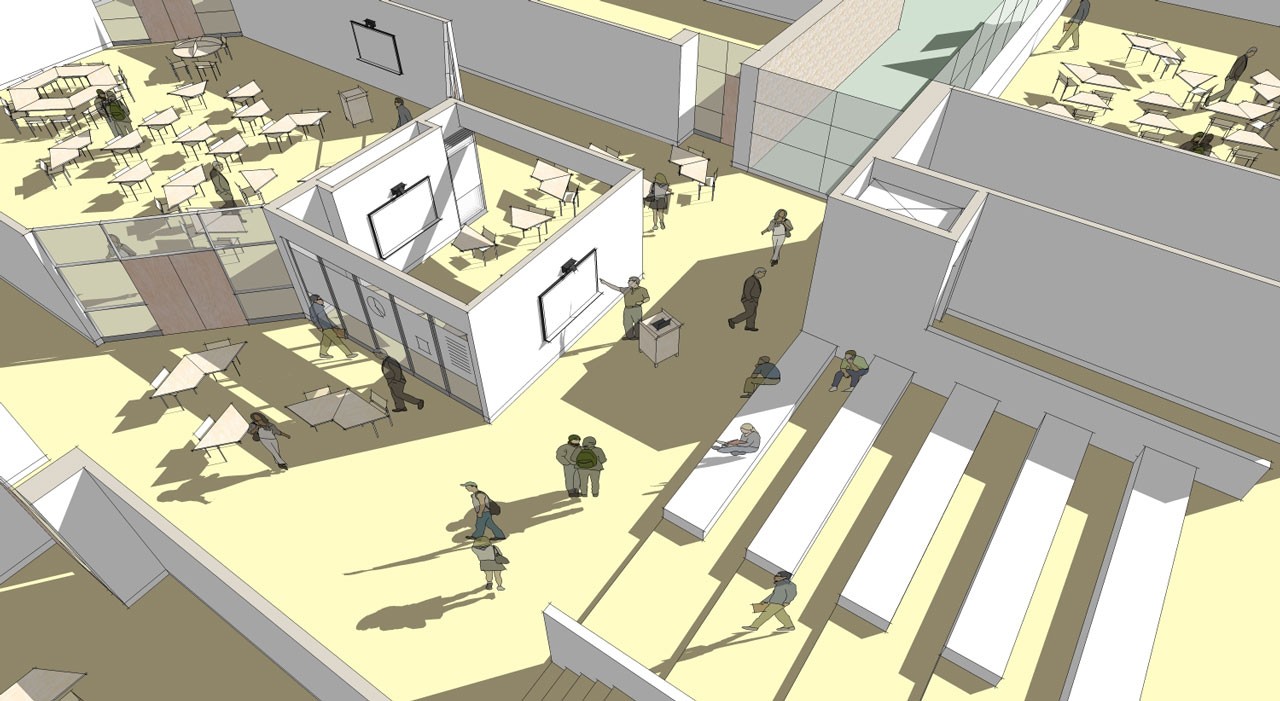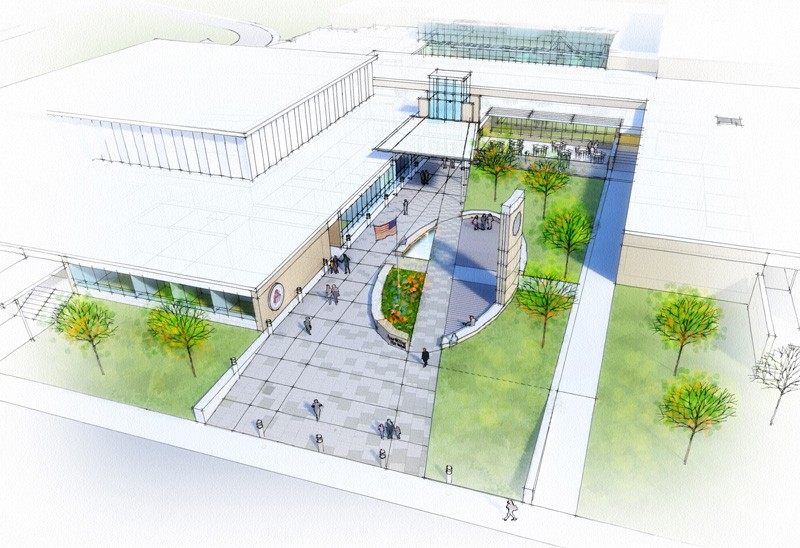The heart of the building’s reinvention involved infilling the existing courtyard to establish a centralized learning commons. This new gathering space is directly connected to the arts and technology disciplines on one side, while still joined with the school’s commons cafeteria on the other. The high school’s new structure establishes open and free-flowing corridors throughout, enabling access to all major facilities such as a large gymnasium, auditorium, media center, and TV studio.
Designing for a New District
The towns of Ayer and Shirley along Massachusetts' northern border came together to form a new District, sharing resources to help maintain a critical enrollment mass. To further elevate the District’s educational culture, SMMA’s design team opted to transform an antiquated 145,000 sf 1960s-era high school by completely reinventing the building layout. The idea was to challenge the notion of using simple renovations to achieve client goals:
“How can we remake a school from a bygone era to inspire teachers, engage students, and embrace the two communities?”

The Massachusetts School Building Authority (MSBA) had initially prescribed a combined middle and high school to increase its total population. SMMA convinced the communities to rethink this logic by thoroughly analyzing the physical attributes of the building, and then conducting a master plan of the District’s entire portfolio of schools. The final solution took the original 1960 building, which housed over 1,000 students, and converted it into a new high school designed for only 495 students.

